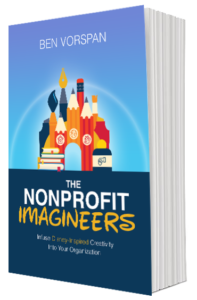
Disney Imagineering is renowned for its ability to create immersive environments that tell compelling stories. One of their key principles, environmental storytelling, can be a powerful tool for nonprofits looking to engage donors, supporters, and the community. By applying this concept, nonprofits can create a cohesive and impactful narrative that guides their fundraising, programming, and marketing efforts throughout the year.
The Basics
Environmental storytelling is a narrative technique used in various forms of media, such as literature, film, video games, and theme park design, to immerse audiences in a story by using the environment and setting to convey key elements of the narrative. Instead of relying solely on dialogue or explicit storytelling, environmental storytelling allows the audience to piece together the story through visual cues, interactive elements, and the overall atmosphere of the space.
In literature, environmental storytelling can be seen in descriptions of settings that reflect the mood or themes of the story. For example, a dark and foreboding castle might signify danger or mystery, while a lush, vibrant garden might represent life and renewal. These descriptions not only help set the scene but also provide insight into the characters and events of the story.
In film, environmental storytelling is often used to establish the mood or tone of a scene. For example, a scene set in a bustling city street might convey a sense of chaos or excitement, while a quiet, empty room might evoke feelings of loneliness or isolation. Through the use of lighting, sound, and visual elements, filmmakers can create rich, immersive environments that enhance the storytelling experience.
In video games, environmental storytelling is a powerful tool for creating immersive, interactive worlds. Players can explore environments, interact with objects, and uncover hidden stories and lore. For example, a player might come across a series of notes and journal entries scattered throughout a level, piecing together the story of what happened in that location.
Theme parks, particularly those designed by Disney Imagineering, are masters of environmental storytelling. Every aspect of a Disney park, from the architecture to the landscaping to the music, is carefully designed to tell a story and create a cohesive, immersive experience for guests. For example, the layout of Main Street, U.S.A. in Disneyland is designed to evoke a turn-of-the-century American town, setting the stage for the adventures that await in the rest of the park.
Setting the Scene: Fundraising
Just as Disney parks are designed to evoke emotions and create memorable experiences, nonprofits can use environmental storytelling to connect with donors. Each fundraising campaign becomes a chapter in a larger story, with a clear beginning, middle, and end. By creating a cohesive narrative that aligns with the organization’s mission and values, nonprofits can inspire donors to become part of the story and support their cause.
Building the Experience: Programming
In Disney parks, every detail contributes to the overall story, from the architecture to the music. Similarly, nonprofits can use environmental storytelling to design their programs and events. Each program should contribute to the overarching narrative, providing donors and supporters with a deeper understanding of the organization’s impact and mission. By creating immersive and engaging experiences, nonprofits can strengthen their connection with the community and build lasting relationships.
Engaging the Audience: Marketing
Disney’s marketing is focused on creating excitement and anticipation for upcoming experiences. Nonprofits can use environmental storytelling to create a sense of anticipation around their programs and events. By using storytelling techniques in their marketing materials, nonprofits can build excitement, engage their audience, and inspire them to take action.
As you can see, by applying environmental storytelling, nonprofits can create a compelling narrative that guides their fundraising, programming, and marketing efforts. By creating immersive experiences that connect with donors and supporters on an emotional level, nonprofits can inspire action, build relationships, and make a lasting impact.
Interested in learning more?
There’s no better place to start than by reading The Nonprofit Imagineers! Environmental Storytelling is just a small piece of the puzzle when it comes to building a creative and innovative nonprofit organization.
 Celebrate 2 years of Imagineering!
Celebrate 2 years of Imagineering!
Comments are closed